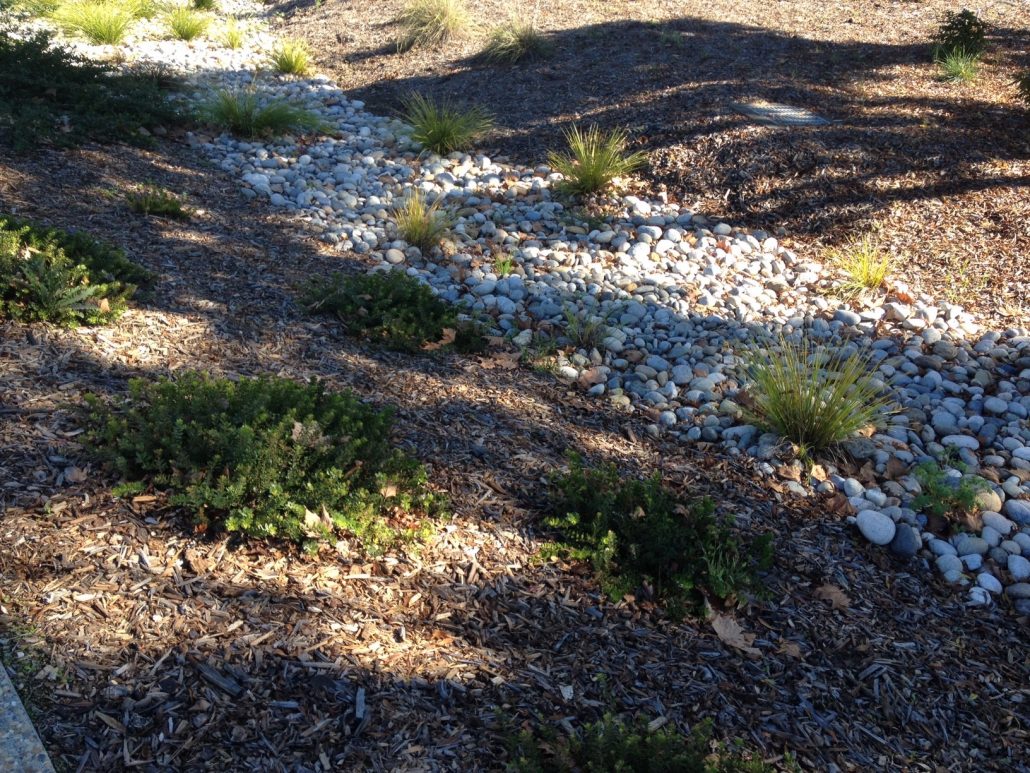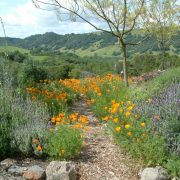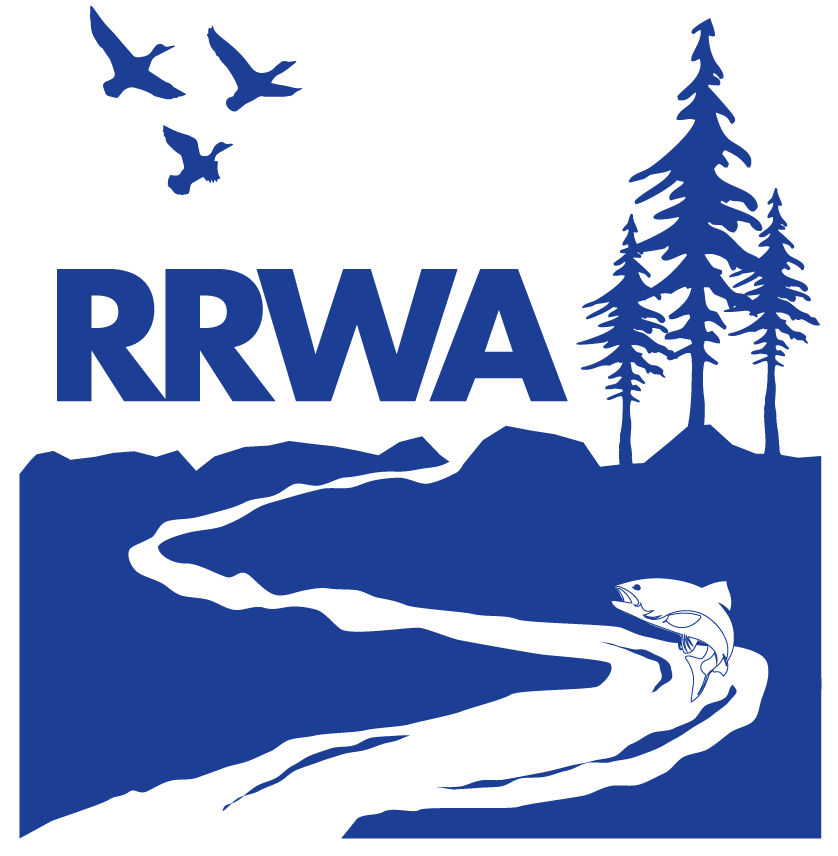It’s Time to Plant a Rain Garden
Historically, homes and streets were intentionally designed to move as much stormwater into a storm drain system as fast as possible. This approach was meant to protect foundations and keep the streets safer during storms. However, as our cities and towns have grown larger, this “old school” method has had some unintended consequences, resulting in damage to our creeks, waterways, the Russian River, and hazards to our communities.
The old school method causes the water to move very quickly and in great amounts. Fast-moving water can sometimes overwhelm the storm drains and creeks and cause local flooding. In large storms, it makes the Russian River rise faster and higher which can cause widespread flooding. Additionally, water in our storm drains flows straight into our creeks and river without ever being treated. Consequently, stormwater pollution gathered from driveways, walkways, rooftops can damage the salmon and steelhead fisheries that are dependent on clean water.
Fortunately, there are many options for reducing the negative effects our homes have on our river.
Rain gardens are one of the easiest methods and they are being used more and more by landscape architects and gardeners. A rain garden captures the water flowing off our homes and driveways and allows it to soak into the ground instead of letting it flow to a storm drain and directly to our river. Rain gardens are part of a “new school” method for managing stormwater called “low impact development” or LID. Rain gardens, like many other LID features, gather, hold, filter, and slow stormwater runoff.

Rain gardens are located in a place in your yard where they can gather rainwater from your roof, patio and/or driveway. They are dug extra deep and often have gravel at the bottom. Soil is placed on top of the gravel and then landscaped with plants that can tolerate saturated soils and even short periods of standing water while keeping the soil in place. Then, the rain water captured at the bottom of the rain garden can to soak into the ground after the storm has passed. This helps filter out some pollutants and slows the flow of stormwater to our river.
Another easy LID feature that a homeowner can implement is to disconnect the rooftop downspouts that drain directly onto hardscape, like your driveway or patio, and reroute the drainage to any vegetated area. Some runoff will infiltrate into the ground and be taken up by vegetation in your yard. Some of the water will be filtered and discharged more slowly into the storm drain system. If you send this water to a rain garden, you can avoid adverse effects to your foundation or protect steep hillside slopes by locating the rain garden away from these features.
Pervious or porous pavers for walkways, patios, parking areas and driveways are also an LID design option. Pervious pavers allow stormwater to infiltrate into the soil through gaps intentionally left between paver bricks or stones. Porous pavers allow for stormwater to infiltrate into the soil through holes or perforations in the pavers.
When we “slow the flow” of stormwater, we protect stream banks from being eroded by an excessive volume of fast moving water. When we allow soils and plants to filter stormwater, we reduce the amount of sediment and pollutants entering water ways. When we infiltrate more of our stormwater, we help replenish groundwater and allow a more natural water cycle to occur.
By building rain gardens, routing downspouts to landscapes, installing permeable pavers and other LID features, we help protect ourselves and the environment, especially our creeks and the Russian River.
The Russian River Watershed Association invites you to learn about design, installation, and maintenance of stormwater capture and treatment features in landscaping at the 4th Biannual Russian River-Friendly Landscaping Event taking place on January 24, 2017. Tickets are free, but registration is required. Visit http://bit.ly/RRFL-Event for more information.
Another excellent source of information for homeowners about LID is the guide “Slow it. Spread it. Sink it. Store it!” which was developed by the Sonoma Valley Groundwater Management Program. To download a free copy of the guide, go to http://sonomarcd.org/htm/rainwater.htm.
This article was authored by Eric Janzen of the City of Cloverdale on behalf of RRWA. RRWA (www.rrwatershed.org) is an association of local public agencies in the Russian River Watershed that have come together to coordinate regional programs for clean water, habitat restoration, and watershed enhancement.




